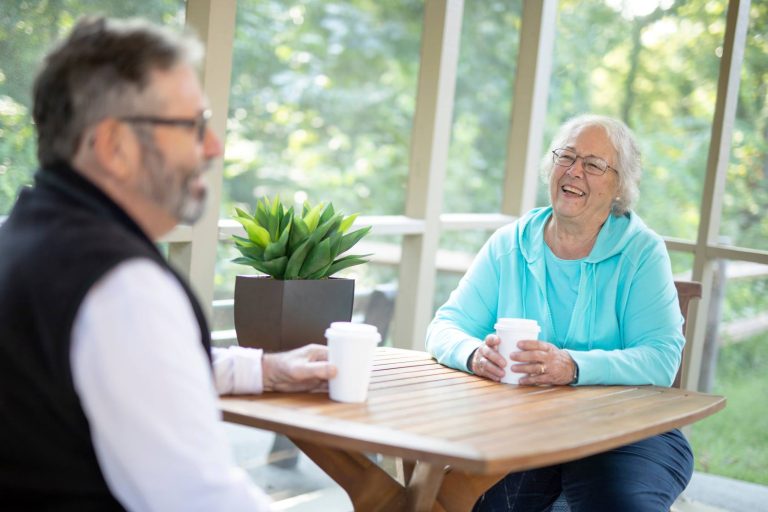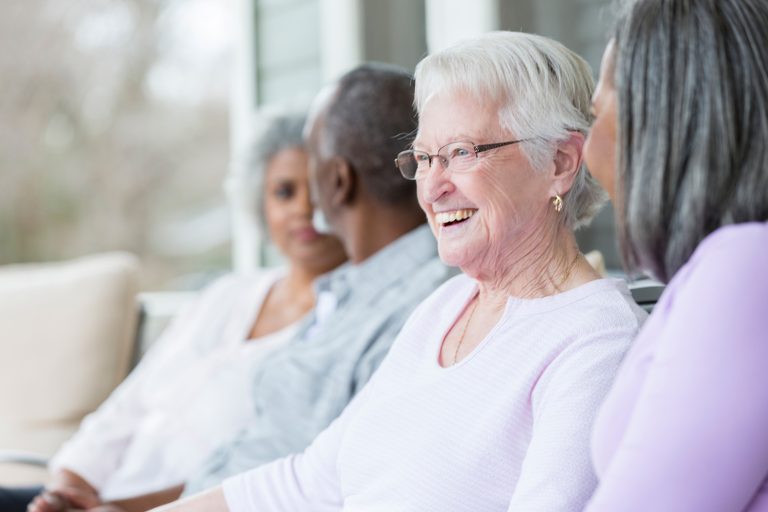
More than 1 million Americans, and 6 million people worldwide, have Parkinson’s disease. At least 60,000 people are newly diagnosed every year, making Parkinson’s disease one of the most common brain diseases, second only to Alzheimer’s disease.
Yet there are currently no lab tests to accurately diagnose Parkinson’s disease, and there is no cure. The journey for this progressive brain disease also varies greatly from person to person. So much so that movement disorder specialists say if you’ve met one person with Parkinson’s disease, you’ve met one person with Parkinson’s disease.
What is Parkinson’s disease?
In our brains, we have cells that make dopamine, a chemical that coordinates movement. Parkinson’s disease, or PD, is a degenerative disease that happens when the brain cells that make dopamine stop working or die.
People with PD may initially notice tremors, then difficulties with movements. They might also notice fine motor skills like writing or buttoning a shirt may become harder to do. Gradually these problems progress, with slowness, stiffness, and walking and balance problems becoming more common.
PD is often referred to as a movement disorder, but sleep and memory problems, pain, constipation, depression, sexual dysfunction and other non-movement symptoms can be part of the disease’s progression. And no two people with PD will experience the same symptoms, or the same disease progression.
According to Vanessa Sembrat, a physical therapist at Fellowship Village in Basking Ridge, NJ, the disease is usually diagnosed in people in their 70s. But PD can be a chameleon; many patients are initially diagnosed with rheumatological conditions like lupus or osteoarthritis.
“Often you might notice symptoms of Parkinson’s disease in your 50s and 60s, but it’s commonly misdiagnosed,” she said.
The problem with a delayed diagnosis, she said, is that this lapse in time equates to physical function that can be lost to the disease. “The earlier we see a person with PD, the quicker we can get them started on a Parkinson’s therapy program. Enhancing quality of life and improving function are so important with this disease. We can make an impact at every stage.”
What therapies help with PD?
Many doctors will prescribe drug therapy when symptoms start interfering with a person’s ability or desire to do what they want or need to do. Medications can ease symptoms and improve the quality of life, but medicine may not be able to manage all aspects of the disease. That’s where other therapies can play a significant role.
A 2016 German study stated that physical activity is recommended for all stages of PD, specifically emphasizing the benefits of physical therapy, occupational and speech therapy, and neurorehabilitation.
And arguably one of the most well-known Americans with PD, actor Michael J. Fox, advocates for exercise on his website, saying exercise can help manage PD symptoms. The site also suggests exercise can help protect the brain, as shown in recent early-stage research.
Exercise and physical therapy can be used to manage symptoms and possibly slow down the progression of the disease. Physical therapists like Vanessa Sembrat and her colleagues who make up Fellowship Senior Living’s therapy team play a critical role in the Parkinons’s disease patient’s life, and are experts at inpatient, outpatient, and at-home rehabilitation, including Parkinson’s therapy.
These are four main types of therapy a person with PD may receive from a therapy team.
Physical therapy: The ability to move around, perform activities of daily living and stay active is crucial for maintaining independence. Physical therapy can help improve gait, balance and posture, and can help reduce the risk of falls.
Speech therapy: PD affects the voice and swallowing, as well as movements vital to communicating, such as gestures and facial expressions. A speech therapist can help strengthen the vocal cords and improve overall communication.
Occupational therapy: A person’s ability to perform basic activities of daily living things like bathing, grooming, fixing meals, using the restroom, even getting out of a chair can be greatly affected by PD. An occupational therapist can help modify the way a person performs a task, can introduce equipment that helps someone perform a task, and improve overall skills to make it easier to perform everyday activities.
Neurorehabilitation: Because memory problems are often a symptom of PD, neurorehabilitation focuses on helping a person retain or even regain some of their cognitive abilities, assisting with problem solving, thinking and memory.
What is LVST BIG® treatment at Fellowship Senior Living?
LSVT BIG is a physical therapy program for people with Parkinson’s disease. It was developed in Arizona in 1987 initially to help people with PD improve their speech and communication. Since then, it has expanded to improve motor functions and is used by therapists worldwide, including at Fellowship Senior Living.
Sembrat is certified in LSVT BIG, a four-week, high-intensity protocol of four hour-long sessions each week with significant homework between sessions, then an annual “recalibration” to adjust exercises as the disease progresses. The protocol is standard for all patients, but can be tailored to fit each person’s lifestyle and hobbies.
Sembrat said she learned about the program a few years ago. When she saw before and after videos of people who went through LSVT BIG treatment, she knew she had to become certified.
“I remember when I saw those videos, my jaw dropped. I couldn’t believe it,” she said. “As a therapist, it’s very hard to treat these patients and have a big effect. So as a clinician, I was so stunned to see the difference in quality of movement in the before and after. It’s so effective.”
Sembrat’s role is to identify and evaluate which PD patients are a fit for the program. Patients need to be able to tolerate hour-long sessions of constant movement, plus commit to an entire month of sessions with homework, performed either with a caregiver or independently.
“We can do the program either in the person’s home or they can come into the clinic,” Sembrat said. “We work with both the caregiver and the individual with PD, because we want to know what each person’s goals are, and how we can help them get there safely and effectively.”
Why choose rehab at a 5-Star Medicare-rated center?
Fellowship Village has been awarded a 5-Star quality rating by the Centers for Medicare & Medicaid Services. The CMS created this system to help people compare care at skilled nursing and rehabilitation centers, and looks at three main categories: health inspections, staffing and quality measures.
“I can’t tell you how many times people especially sons or daughters of an older patient pick rehab at Fellowship Village because of our 5-Star Rating,” Sembrat said. “People are doing their homework; before they were relying on what the doctor or social worker recommended. Globally, it’s a huge benefit because there are reasons why Fellowship Village earned five stars reasons that include staff dedication and attention, care even the food.”
Sembrat added that a community’s nonprofit status also makes a big difference in the quality of care a person receives.
“A nonprofit community like Fellowship Village is person-centered instead of profit-driven,” she said. “Families tell me about an intangible feeling when they walk in the door. ‘People were smiling, greeting me.’ ‘I could feel the affection from the staff.’ These are the comments I get. You can’t train people to care. Genuine care that comes from the top here, and you can feel it.”
Contact us to learn more about LSVT BIG and therapy options for Parkinson’s disease
If you or someone you love has recently been diagnosed with PD, contact us today. Our therapy team can make a significant difference in both patients’ and caregivers’ lives. Therapies are available in the comfort of your own home or at our campus at Fellowship Village.




